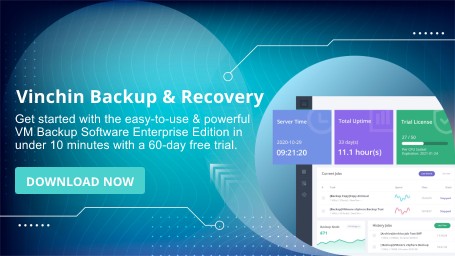-
What is KVM?
-
What is QEMU?
-
The Relationship Between KVM and QEMU
-
QEMU vs. KVM: Differences
-
Always Back up Your Virtual Machines
-
KVM and QEMU FAQs
-
Conclusion
In the world of virtualization, QEMU and KVM are two critical players. They are essential for creating and managing virtual machines, allowing organizations and individuals to fully leverage the potential of virtualization across various applications.
So, how do you determine which one is more suitable for you? Let’s take a look at the differences between QEMU and KVM, as well as the advantages and disadvantages of these two virtualization technologies.
What is KVM?
KVM, or Kernel-based Virtual Machine, is an open-source virtualization technology. KVM runs as part of the Linux kernel and leverages hardware extensions such as Intel VT or AMD-V to achieve efficient hardware-assisted virtualization.
By integrating with the host operating syste’s kernel, KVM reduces overhead and provides higher performance than pure software solutions like QEMU. In fact, KVM offers the virtualization framework, while QEMU is often used as a user-space component to emulate devices.
In a KVM architecture, virtual machines are implemented as regular Linux processes, scheduled by the standard Linux scheduler. Each virtual CPU appears as a regular Linux process, allowing KVM to benefit from all the features of the Linux kernel.
KVM itself doesn’t perform any emulation; instead, it requires a user-space program to set up a guest virtual machine’s address space via the “/dev/kvm” interface, provide simulated I/O, and map its video output back to the host’s display. Currently, this program is QEMU.
What is QEMU?
QEMU, or Quick Emulator, is an open-source hardware virtualization software that can run virtual machines on different host platforms. Unlike KVM, which focuses on hardware-assisted virtualization, QEMU uses full-system emulation and can simulate an entire computer system, including the processor, memory, storage, and peripheral devices.
This flexibility makes QEMU an excellent choice for cross-platform virtualization, as it supports a variety of architectures.
The Relationship Between KVM and QEMU
To illustrate this, let’s compare building a house: KVM is like the developer who builds the house but doesn’t do the interior design, while QEMU is like the interior design company that may not build the house well but does an excellent job with the décor. Thus, we use KVM to build the house (hardware virtualization, simulating CPU and memory resources) and QEMU for decoration (software emulation, simulating network cards, graphics cards, storage controllers, and hard disks).
A QEMU virtual machine is a pure software implementation that can run independently without the KVM module, but its performance is lower. QEMU provides a full set of virtualization features, including processor virtualization, memory virtualization, and I/O device virtualization. QEMU is a user-space process that must call the functionality provided by KVM via a specific interface. From QEMU’s perspective, during the VM's operation, QEMU uses system call interfaces provided by KVM to configure the kernel, and KVM is responsible for running the VM in a special mode on the processor.
KVM only simulates CPU and memory, meaning that a guest operating system can run on the host, but you cannot see or interact with it. So, someone modified the QEMU code, replacing its CPU and memory emulation with KVM, while leaving the network card, display, etc., to QEMU. Hence, QEMU + KVM together form a complete virtualization platform.
KVM is just a kernel module, and users cannot interact with the kernel module directly. They need to use user-space management tools, and QEMU is one of these tools. KVM and QEMU complement each other; QEMU achieves hardware virtualization speed through KVM, and KVM relies on QEMU to emulate devices. For KVM, other user-space tools exist, such as libvirt, virsh, and virt-manager developed by RedHat, and QEMU is not the only option.
So, the simple and direct understanding is: QEMU is a computer emulator, and KVM provides acceleration for the emulation of the computer.
QEMU vs. KVM: Differences
Both KVM and QEMU are powerful technologies, and you can use them depending on the project size and objectives. To compare QEMU and KVM, let’s analyze these two technologies in terms of performance, device support, management, and usability:
1. Performance and Efficiency
Due to its full-system emulation approach, QEMU is more resource-intensive than KVM. Since QEMU simulates both hardware and the guest operating system, it incurs higher overhead, which could lead to performance bottlenecks, especially for compute-intensive workloads.
Additionally, QEMU relies on software virtualization, which may limit its ability to achieve optimal performance in some scenarios.
KVM, as a kernel-based virtualization technology, enjoys the advantages of hardware-assisted virtualization. This allows KVM to directly access the host processor’s virtualization extensions, reducing overhead and improving performance.
By leveraging the host kernel for memory management and CPU scheduling, KVM ensures that virtual machines run efficiently at near-native speeds. For resource-intensive workloads and performance-critical applications, KVM usually outperforms QEMU.
2. Device and Platform Support
QEMU focuses on full-system emulation, offering broad device and platform support. QEMU can simulate many hardware components, making it a versatile option for running virtual machines on different architectures, including x86, ARM, PowerPC, and others. This versatility makes QEMU an excellent choice for developers and testers who need to work across multiple platforms.
On the other hand, KVM relies on hardware-assisted virtualization, so its platform support is limited to systems with specific virtualization extensions (such as Intel VT or AMD-V). Thus, KVM is mainly suitable for x86-based systems and is less versatile than QEMU when it comes to cross-platform virtualization.
3. Ease of Use and Management
QEMU’s full-system emulation approach provides a more intuitive and user-friendly interface. Setting up virtual machines with QEMU is relatively simple, and its compatibility with multiple architectures increases flexibility. Furthermore, QEMU’s ability to run without kernel privileges makes it a simpler choice for users who require less administrative control.
As a kernel-based virtualization solution, KVM is tightly integrated with the Linux kernel. For users who are not familiar with Linux systems, this tight integration may lead to a steeper learning curve. However, KVM’s management tools (such as virt-manager) offer user-friendly interfaces for managing virtual machines and their configurations. For users familiar with Linux or those seeking robust virtualization management, KVM is a powerful and efficient choice.
Always Back up Your Virtual Machines
Also, don't forget that data protection is always important. No matter what you choose in the end, you can always use Vinchin Backup & Recovery to easily protect your business-critical data saved in VMs. It’s fully compatible with most mainstream KVM-based virtual platforms including Proxmox, oVirt, Red Hat Virtualization, Oracle Linux Virtualization Manager, and Huawei FusionCompute (KVM).(Native KVM is not supported for now)
Besides incremental, CBT/CBT alternative driven VM backup, the software also supports file-level granular restore, instant restore, V2V (cross-platform recovery), and a bunch of other effective and advanced features.
It only takes 4 steps for you to backup VMs, here will show you how to backup Proxmox VM with Vinchin Backup & Recovery:
1. Select the backup object.
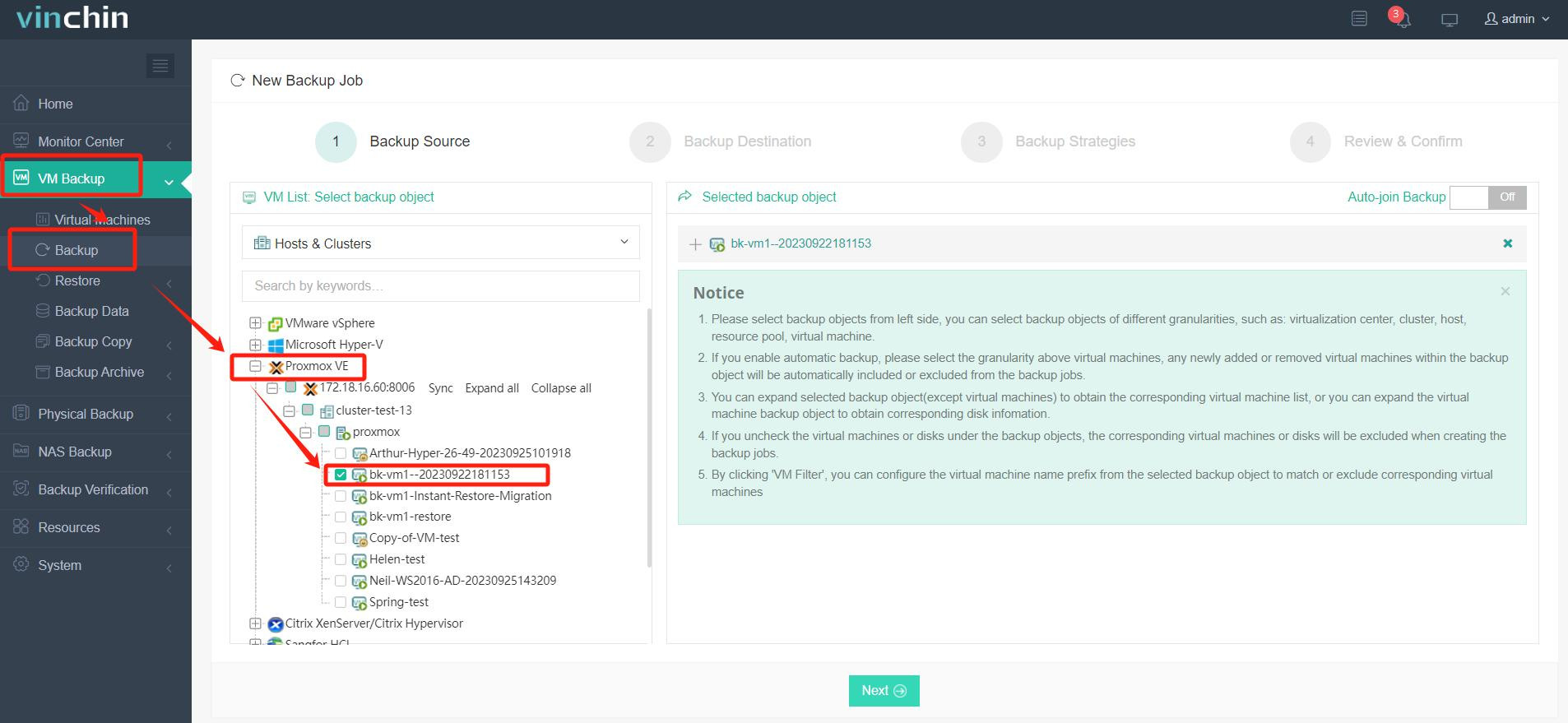
2. Select backup destination.
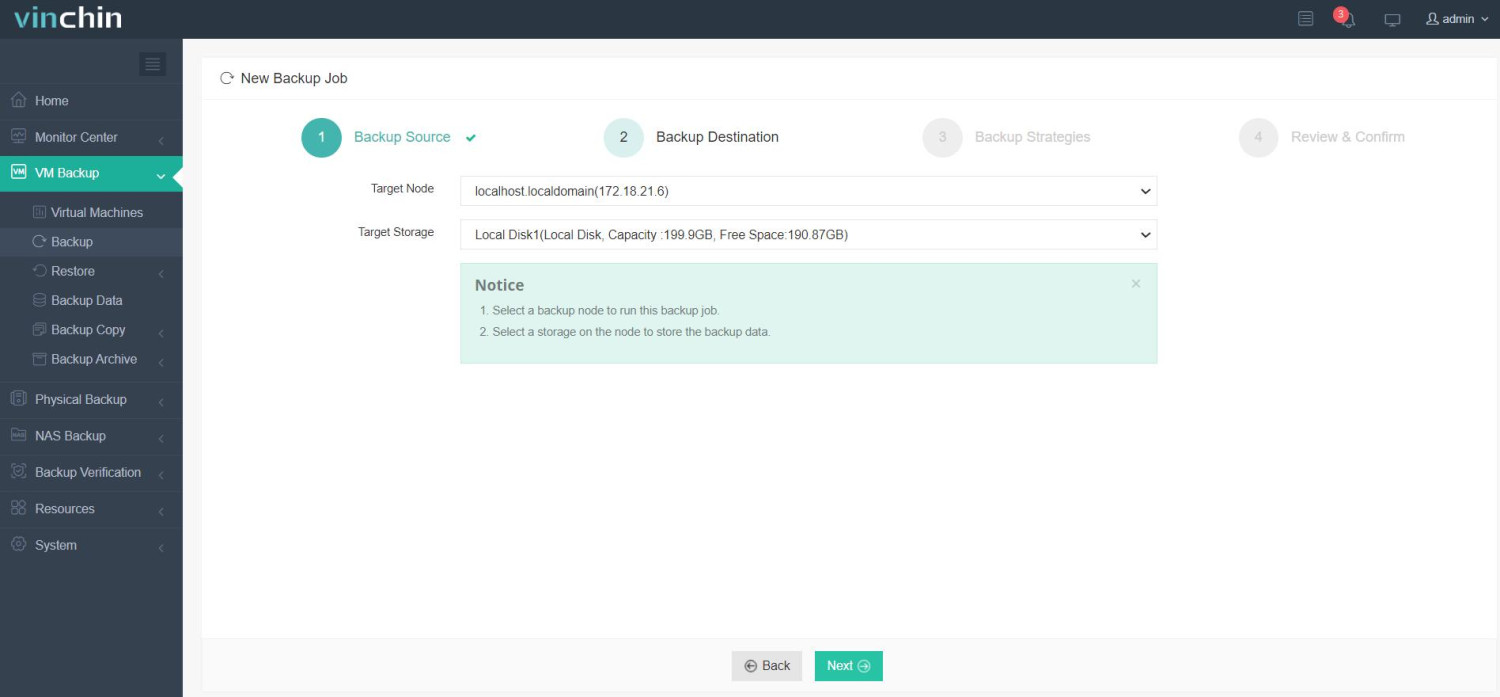
3. Configure backup strategies.
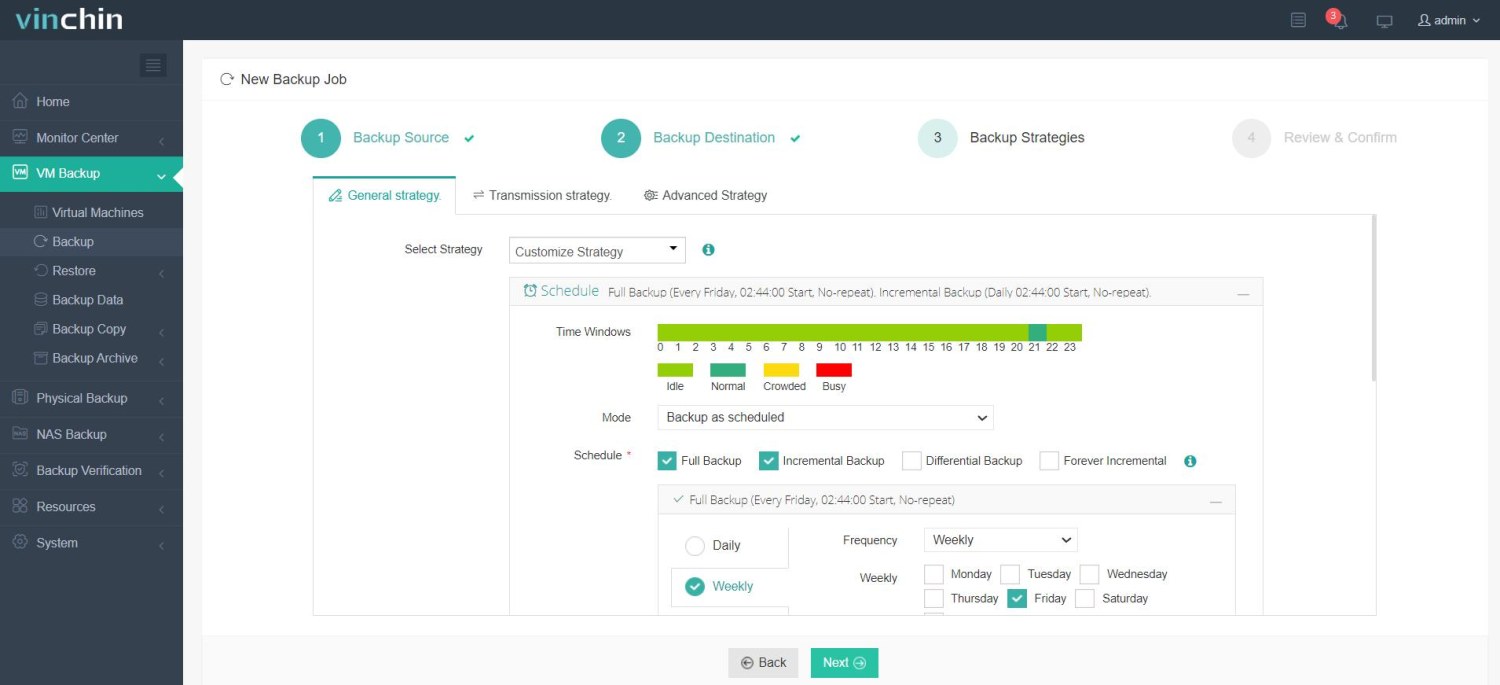
4. Review and submit the job.
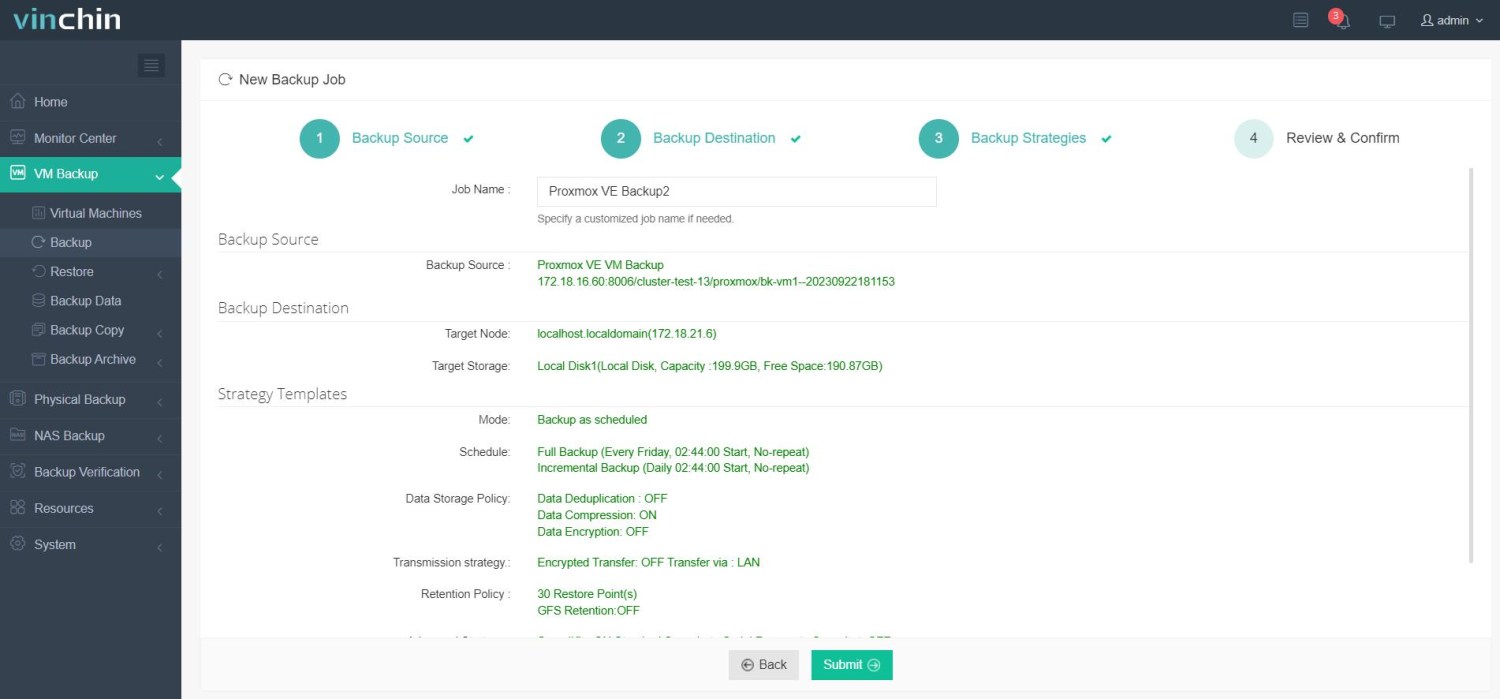
Vinchin Backup & Recovery has been selected by thousands of companies and you can also start to use this powerful system with a 60-day full-featured trial! Also, contact us and leave your needs, and then you will receive a solution according to your IT environment.
KVM and QEMU FAQs
1. Can QEMU be used without KVM?
Yes, QEMU can be used without KVM, but without hardware acceleration, performance will be significantly slower. When used without KVM, QEMU emulates the entire hardware platform, which is much slower than hardware-assisted virtualization.
2. What is the purpose of libvirt in KVM/QEMU?
Libvirt is a toolkit and API used to manage virtualization platforms. It abstracts the management of VMs, networks, storage, and other resources. It simplifies managing KVM and QEMU through command-line tools (like virsh) or graphical tools like virt-manager.
3. What is the difference between a full virtualization and para-virtualization in KVM/QEMU?
Full virtualization: The guest OS is unaware it is running on a virtualized system. KVM provides complete isolation from the host system and simulates the entire hardware environment.
Para-virtualization: The guest OS is modified to be aware that it’s running in a virtualized environment. It communicates directly with the hypervisor (KVM) for improved performance.
Conclusion
Both QEMU and KVM are powerful virtualization technologies, each with unique strengths and weaknesses. If you need cross-platform support, flexibility, and ease of use, QEMU might be better suited for your virtualization needs. On the other hand, if performance, efficiency, and seamless integration with Linux are your priorities, KVM is a highly suitable choice. Ultimately, the decision between QEMU and KVM depends on your specific requirements, workload characteristics, and familiarity with Linux systems.
Share on:


